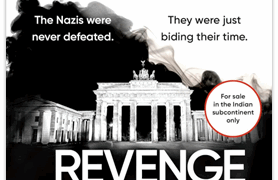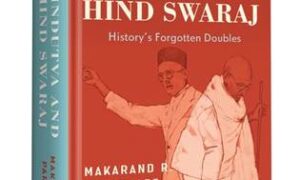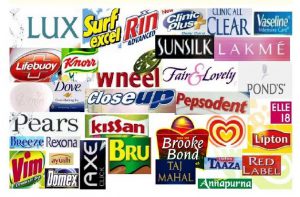
Image: The HUL Brand Basket
By Dr Shashank Shah
The Indian FMCG Sector is agog with regular news and developments. Thanks to Patanjali Ayurved Ltd. and its proactive communication that discussions on this sector and analysts’ interest in its growth and promise is at an all-time high.
Undoubtedly, this is a sector that’s quite ‘recession-proof’ as toiletries and daily personal use items are the last to go out of a typical household shopping list in good and bad times! For students of marketing and business management, it is a great opportunity to understand consumer behaviour in this space; and also grasp the fundamentals that a company needs to address while trying to delight crores of consumers in its target market. Consumer understanding is at the heart of a successful FMCG business. It helps FMCG brands to constantly evolve and retain consumer preference.
In this post, I share my learnings and analysis of the consumer understanding developed by India’s largest FMCG company – Hindustan Unilever Ltd (HUL). What has been the key reason that its brands such as Lux and Lifebuoy have remained most preferred and trusted brands in their categories, over several generations?
Consumer Understanding: The Core of the FMCG Market
HUL believes that its understanding of consumers has helped it to grow the markets through innovations—from introducing affordable sachets to drive penetration in shampoos and fabric wash segments to introducing top-end skin care products catering to emerging consumer needs such as anti-ageing. The company’s endeavour to serve the many ‘Indias’ embedded in the one India, has enabled HUL to build its portfolio of products. From premium brands to the affluent, from value-for-money brands to middle income consumers, and from affordably priced brands to the low-income consumers.
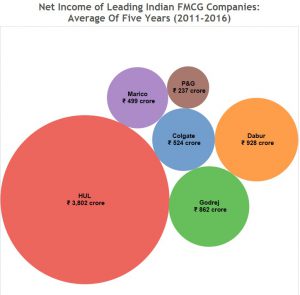
Image: HUL’s Performance vis-a-vis competing listed FMCG companies between 2011 and 2016
According to a recent AC Nielsen Study, 62 of the top 100 brands in the Indian FMCG sector were owned by MNCs, and the balance were owned by Indian companies. Fifteen companies owned these 62 brands, and 27 of these sixty-two were owned by HUL. The personal care category had the largest number of brands, with HUL accounting for 11 of the 22 brands in this category. In 2016, 6 of its brands were valued at ₹ 2,000 crore each. These included Surf Excel, Brooke Bond, Wheel, Rin, Lifebuoy and Fair and Lovely. That is the power of HUL brands! Understanding Consumer Needs Given such an elaborate set of consumers covering the entire spectrum from the affluent to the rural, how does HUL define what a typical customer needs? I asked this very question to Sanjiv Kakkar, then executive director of customer development at HUL, and now executive vice president at Unilever NAMET— North Africa, the Middle East and Turkey. He said that a ‘customer value proposition’, in simple terms what a company uniquely offers to a consumer, is the function of: Consumption Need (Product) + Quality + Price + Psychological Need associated with the Brand Firstly, every consumer expects that the product which she is buying is a good product and provides value for money i.e. it should satisfy the consumer’s value equation. She should perceive value addition to her by paying the price for that particular product. Secondly, the consumer expects that since she has chosen the product, it’s a better quality product as compared to others. Most importantly, the consumer has certain expectations from the brand of the product as well. A good brand satisfies certain psychological needs of the consumer. 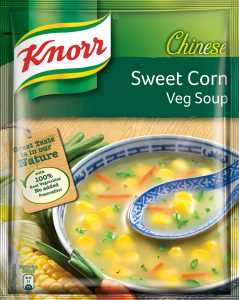
For example, Knorr Soup. The product proposition is Soup (basic product) + Knorr Soup (brand). The advertising of the soup helps the consumer family supposedly relate to its values of a ‘wholesome family soup product’ while consuming it. So a brand satisfies a basic consumption need and a higher order psychological need. Both are equally important because otherwise, a company could be selling commodities, why would it sell brands? It can just sell the product as a soup powder in the market without any label, isn’t it? The reason why a product is branded is that it helps the company to differentiate its products from competitors and also satisfy certain psychological needs of the consumer. Meeting Challenges While the formula looks rather easy to achieve, there are challenges. The major challenge is regarding finding the right balance between corporate profitability, product quality and pricing. From the consumers’ point of view, they would be thrilled if they get a better quality product at a lower price. However, this would be disastrous for the company in terms of profitability. So it’s a challenge to find the right price from the consumers’ viewpoint. The company may find that though it considers its price to be the best price, it’s not able to make enough money. So the other thing would be to bring down the quality, to make the profitability right. But, if the company does this, it would be upsetting the value equation of the consumer, and the consumer may not want to buy the product at that price for that quality. Summarizing this whole balancing act, Sanjiv said, ‘According to me, managing that trinity is the greatest challenge. The value (quality) that the consumer seeks from you, the price at which you sell, and the profitability which the shareholder is demanding from you, by virtue of having invested in your business. Trying to manage these is always a key challenge as far as the consumers are concerned.’ In subsequent posts, I’ll capture each of these facets of HUL’s Consumer Strategy to explore what ‘mistakes’ they made and decipher where they succeeded over the last 125 years of their presence in India. You may also like to read my earlier posts on the Indian FMCG Sector and HUL:
- Hindustan Unilever Limited: Competing with Goliath
- Learning from Competitive Challenges in the Indian FMCG Sector
Know about India’s leading corporations and their unique approach to business in ‘WIN-WIN CORPORATIONS: The Indian Way of Shaping Successful Strategies’.
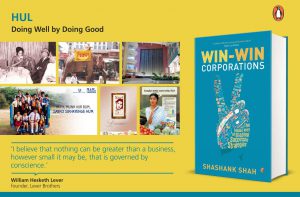
Published by Penguin Random House India, ‘WIN-WIN CORPORATIONS‘ is available at your nearest bookstore and on select metro airports. It can also be ordered on Flipkart in Print version and on Amazon in Kindle version. You can download the multi-stakeholder implementation toolkits from: shashankshah.com Watch a 55 second animation on ‘Win-Win Corporations’.
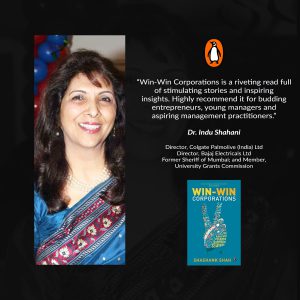
(This write-up was first published by Dr Shashank Shah on his LinkedIn Account. Here, it is published after a written confirmation from Dr Shah. Views are personal.)


